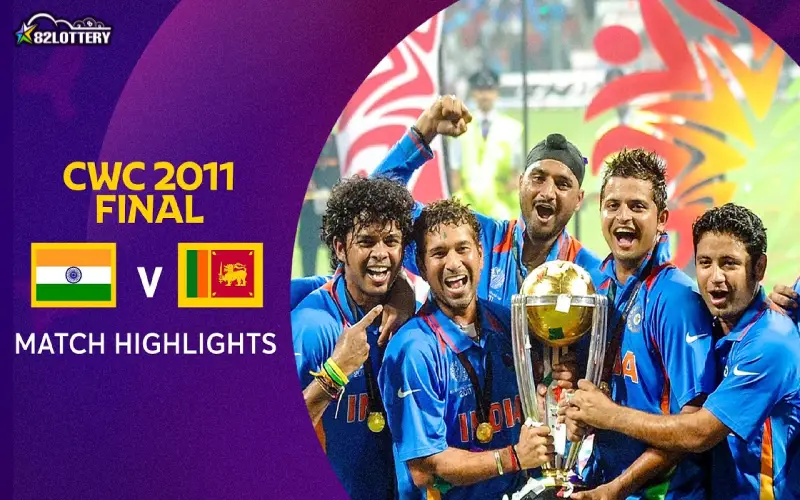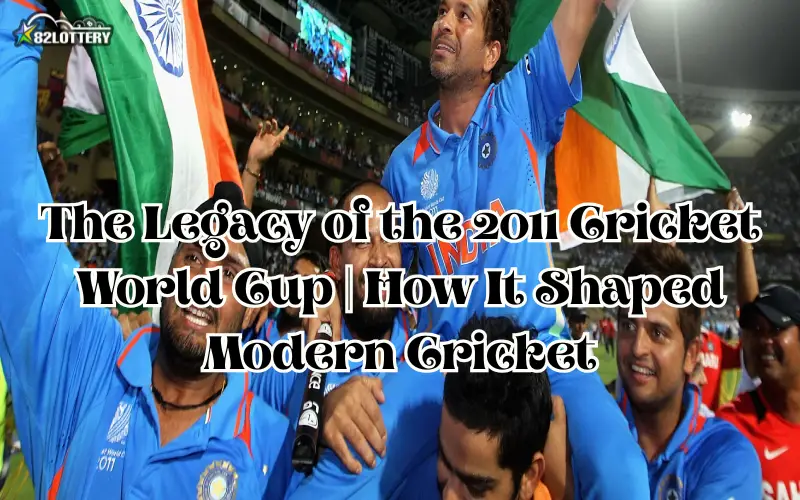The 2011 Cricket World Cup remains one of the most iconic moments in the history of the sport. Held in India, Sri Lanka, and Bangladesh, this World Cup not only delivered thrilling cricket but also marked a pivotal moment that shaped the future of the game. The tournament’s impact resonates in various aspects of cricket today, influencing everything from global popularity to the evolution of playing styles.
In this article, we explore the lasting legacy of the 2011 Cricket World Cup and how it contributed to the modern landscape of the sport.
A Glorious Moment for Indian Cricket
The 2011 Cricket World Cup was a historic triumph for India, who lifted the trophy after 28 years, cementing their place in the sport’s history. The final, held at the Wankhede Stadium in Mumbai, 82 lottery mod saw India defeat Sri Lanka by 6 wickets to claim their second World Cup title. The win sparked celebrations not just across India but around the cricketing world, as the Indian team, led by MS Dhoni, lifted the cup in front of a jubilant home crowd.
India’s victory was a significant milestone for the nation, both in terms of cricket and national pride. It marked the end of a long wait since their first World Cup win in 1983. For Indian cricket, this success revived the nation’s passion for the game and pushed it into a new era of dominance, where India began to be recognized as one of the strongest teams in world cricket.
The Rise of T20 Cricket and the IPL
One of the key outcomes of the 2011 Cricket World Cup was the further cementing of the T20 format as a significant force in international cricket. Although the T20 format had already been established with the inception of the ICC T20 World Cup in 2007, it was the 2011 Cricket World Cup that confirmed the impact of shorter formats on the global game.
Following the World Cup, the Indian Premier League (IPL) gained even more momentum. The IPL, which had begun in 2008, became a commercial juggernaut and set the standard for T20 leagues worldwide. With the rise of T20 leagues in various countries, players found new avenues to showcase their talent, making the game more accessible and exciting for fans of all ages.
The 2011 Cricket World Cup served as a catalyst for the increasing prominence of T20 cricket. The success of India’s aggressive batting line-up, led by stars like Virender Sehwag, Sachin Tendulkar, and Gautam Gambhir, showcased how explosive batting and fast-paced play could dominate the modern cricketing world. The players’ attacking mindset encouraged younger cricketers to focus on power-hitting and fast-scoring techniques.

A Shift in Batting Philosophy
The 2011 Cricket World Cup had a profound effect on the batting philosophies of international teams. The aggressive approach to batting, particularly in limited-overs cricket, was highlighted during the World Cup. While the traditional technique-focused style of cricket still held sway, the tournament encouraged players to play with freedom and flair.
India’s opening partnership between Sehwag and Tendulkar was a perfect example of how modern cricket was evolving. The pair’s aggressive yet controlled approach to batting set the tone for the entire tournament. Players began to embrace a more attacking mindset, focused on scoring quickly in the early overs, a trend that continues to dominate ODI cricket today. Teams began to prioritize boundary-hitting and run-rate management, rather than simply defending wickets.
The explosive batting exhibited by Shane Watson, Kieron Pollard, and Yuvraj Singh further emphasized this change in strategy. This new attitude towards batting not only contributed to the success of many teams during the 2011 World Cup but also continued to influence how limited-overs cricket was played in the years that followed.
Yuvraj Singh’s Heroic Performance
One of the most memorable stories of the 2011 Cricket World Cup was the remarkable performance of Yuvraj Singh. The all-rounder was named the Player of the Tournament for his outstanding contributions with both bat and ball. He scored 362 runs, took 15 wickets, and played a crucial role in India’s World Cup campaign.
Yuvraj’s success highlighted the increasing importance of all-rounders in modern cricket. Players who could contribute in multiple departments of the game—batting, bowling, and fielding—became more valuable. The legacy of this shift has continued to this day, with teams now seeking players who can deliver across formats. Players like Ben Stokes, Shakib Al Hasan, and Hardik Pandya are perfect examples of how all-rounders have become integral to success in contemporary cricket.
The Influence on the 2015 and 2019 World Cups
The impact of the 2011 Cricket World Cup was also seen in the subsequent tournaments. The 2015 Cricket World Cup, held in Australia and New Zealand, showcased more aggressive cricket, with Australia and New Zealand leading the way with their attacking style of play. The Australian team, in particular, adopted a similar approach to the 2011 World Cup champions, combining aggressive batting with disciplined bowling to clinch their fifth World Cup title.
Similarly, the 2019 Cricket World Cup was heavily influenced by the attacking strategies and team dynamics that began to take shape in the 2011 tournament. The 2019 tournament saw an explosion of fast-paced cricket, with teams emphasizing boundary-hitting and innovative strategies, which were first put into practice during the 2011 World Cup.
Strengthening the Global Reach of Cricket
The 2011 Cricket World Cup was also pivotal in strengthening cricket’s global reach. India’s successful hosting of the tournament brought millions of fans to the stadiums and millions more in front of their screens, creating an unprecedented level of viewership. The World Cup sparked a renewed interest in cricket, particularly in countries where the sport had previously not been a top priority. This helped solidify the ICC’s vision for cricket to be a truly global sport.
The tournament also had a positive impact on grassroots cricket, inspiring young cricketers worldwide. The success of the Indian cricket team, led by their heroes, showed young players what was possible through hard work, talent, and team unity. It became a powerful tool for cricket academies and development programs to nurture future talent.
Conclusion
The 2011 Cricket World Cup was a landmark event that left an indelible mark on the sport of cricket. It not only celebrated India’s victory but also introduced new trends and strategies that are still evident in modern cricket today. From the rise of T20 cricket and aggressive batting styles to the prominence of all-rounders, the legacy of the 2011 Cricket World Cup continues to shape the direction of the game. As we look to the future of cricket, it’s clear that the 2011 World Cup laid the foundation for much of the sport’s modern evolution.







